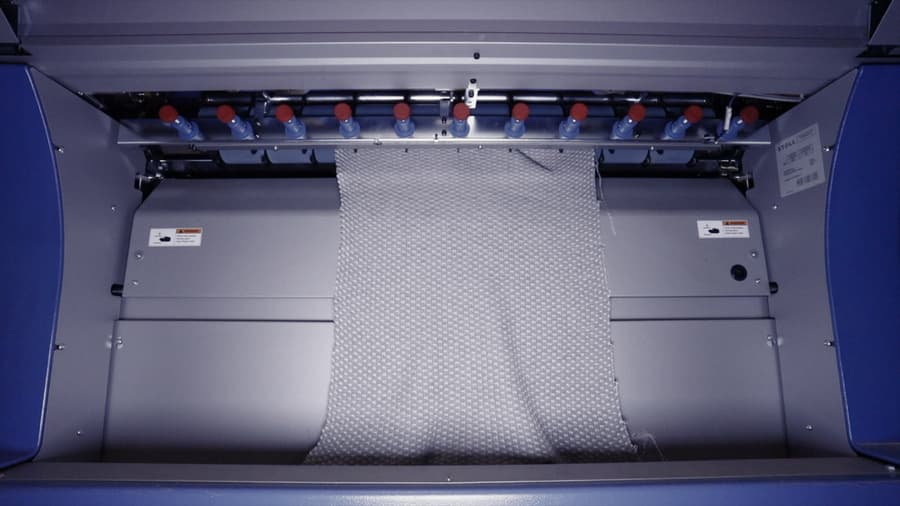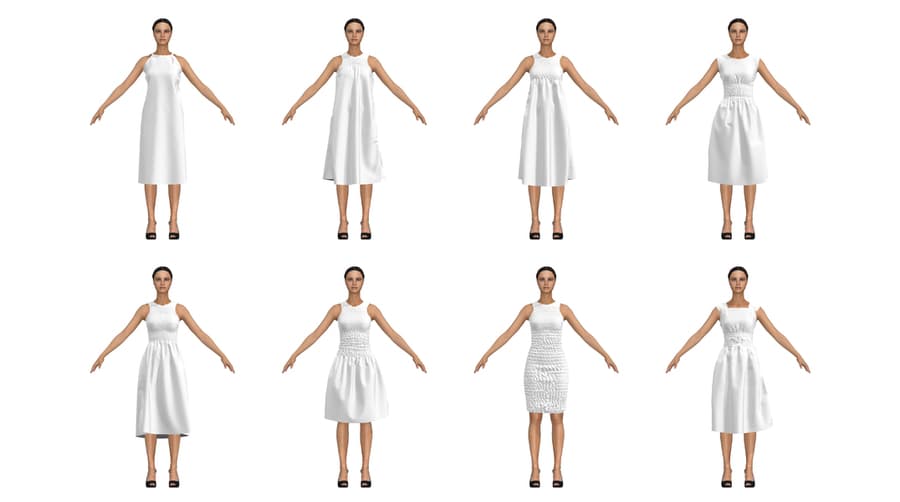Custom-fit clothing is usually quite expensive, but perhaps it doesn’t have to be. MIT’s 4D Knit Dress is an example of a new type of clothing that a robot could selectively shrink to fit the wearer, perhaps right in the store.
The technology is being developed by a team at MIT’s Self Assembly Lab, working in collaboration with high-tech apparel company Ministry of Supply.
While the dress itself isn’t 3D-printed in the usual sense, the “4D” in its name refers to the concept of 4D printing, in which the fourth dimension of an item’s fabrication process is self-assembly over time. This isn’t the Self Assembly Lab’s first foray into the field, as it previously brought us strands of 4D-printed material that self-fold into predetermined shapes when placed in water.
In the case of the 4D Knit Dress, a computer-controlled industrial knitting machine starts out by knitting the entire basic dress all in one piece, incorporating a special active yarn in which the fibers permanently shorten when heated past a certain temperature.

MIT Self Assembly Lab
Upon being purchased, the “unprocessed” dress is placed on a dress-form mannequin.
Based on the buyer’s measurements and their individual style, a robotic arm then uses a custom heat gun to strategically heat the garment, causing the fabric to shrink just the right amount in just the right places. Depending on how the active yarn is distributed in those areas, it can shrink to form features such as pintucks, pleats or a cinched waist.
And yes, we’ve been told that washing the dress in hot water won’t activate the active yarn. That said, if the wearer starts getting tired of the garment in its present form, they can take it back to the store to get new features added by the gun-wielding robot. In that way, it will stay fashionable for longer than a normal dress.

MIT Self Assembly Lab
The technology should additionally reduce the amount of fabric that goes to waste in the textile industry. And the selling points don’t stop there.
“It may also be able to absorb some of the size variations that retailers need to stock,” says Sasha MicKinlay, a Self-Assembly Lab researcher who helped produce the active yarns, created the concept design, developed the knitting technique and programmed the knitting machine. “Instead of extra-small, small, medium, large, and extra-large sizes, retailers may be able to have one dress for the smaller sizes and one for the larger sizes.”
Other 4D Knit garments are now in the works. You can see the robotic dress-altering process – which was programmed by MIT architectural design student Danny Griffin – in the following video.
4D Knit Dress: Transforming Style
Source: MIT
Source of Article